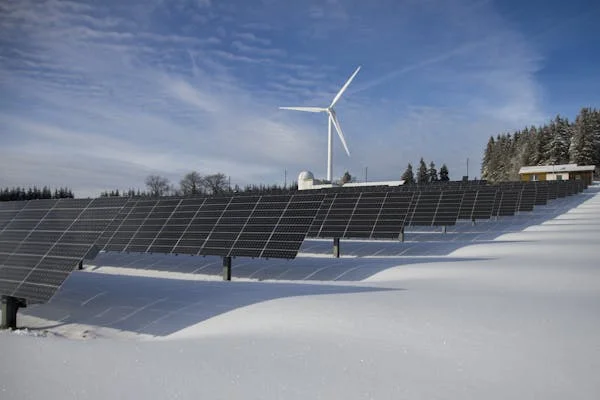Public demand for clean, sustainable energy is booming across the country due to growing concerns about climate change and a desire for energy independence. The global market for green energy is forecasted to reach well over two trillion U.S. dollars by 2030, demonstrating a seismic shift towards an eco-friendly future.
With more and more institutions harnessing green power, and developments such as energy storage breakthroughs and rechargeable tires emerging, many people are wondering what our future is going to look like.
Here are some of the trends and innovations shaping the world of sustainable energy.
Advancements in Renewable Energy Technologies
The cornerstone of a sustainable energy future lies in the continued advancement of renewable energy sources like solar, wind, geothermal, and hydropower. Solar panels are becoming increasingly efficient and affordable, with innovations like perovskite solar cells holding the potential to revolutionize solar energy capture.
Wind turbine technology is constantly evolving, with taller, more powerful turbines maximizing wind energy harvesting. Geothermal technology is making strides in utilizing the Earth’s natural heat for electricity generation, particularly in areas with significant volcanic activity.
As sustainable power sources become mainstream, efficiency is increased, costs are reduced, and energy becomes more accessible. It also fuels the demand for specialized components. Suppliers like RS Components USA are instrumental in providing the necessary parts for these innovative energy systems.
The Role of Smart Grids and Energy Management Systems
One of the biggest challenges in integrating renewable energy is their inherent variability since the sun doesn’t always shine, and the wind doesn’t always blow. To address this, smart grids are emerging as a critical solution.
These intelligent networks utilize advanced communication technologies to optimize energy distribution and storage. By dynamically adjusting energy flow based on real-time demand and supply, smart grids can ensure a stable electricity grid even with the integration of multiple renewable sources.
Energy management systems (EMS) are another key player that is changing the game. These software platforms help consumers monitor and manage their energy usage by providing real-time data on consumption patterns. This empowers users to make informed choices about their energy use and potentially reduce costs.
Policy Trends and Their Impact on Sustainable Energy Adoption
Government policies play a vital role in accelerating the adoption of sustainable energy solutions. Tax credits, incentives, and feed-in tariffs for renewable energy projects are key drivers of investment and deployment. By phasing out subsidies for fossil fuels and mandating stricter emission regulations, a stronger market for clean alternatives can emerge.
The recently passed Inflation Reduction Act represents a significant step forward for US climate action. It includes billions of dollars in tax credits for renewable energy technologies, electric vehicles, and clean energy manufacturing to incentivize clean energy adoption.





